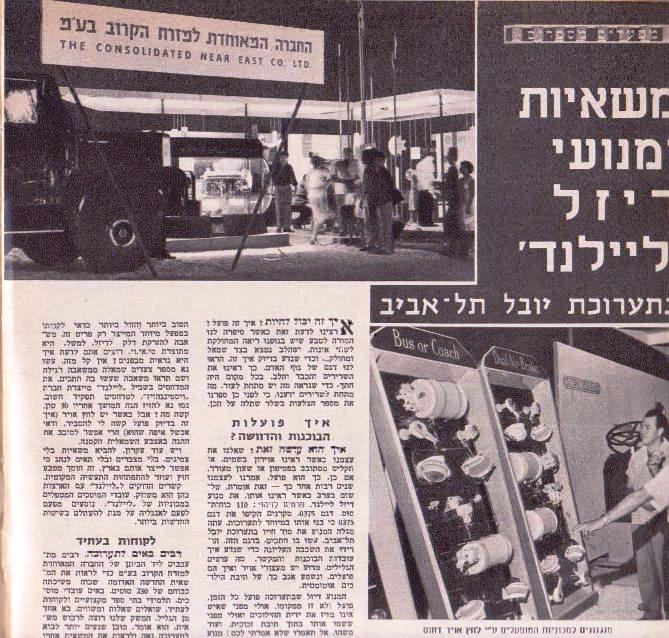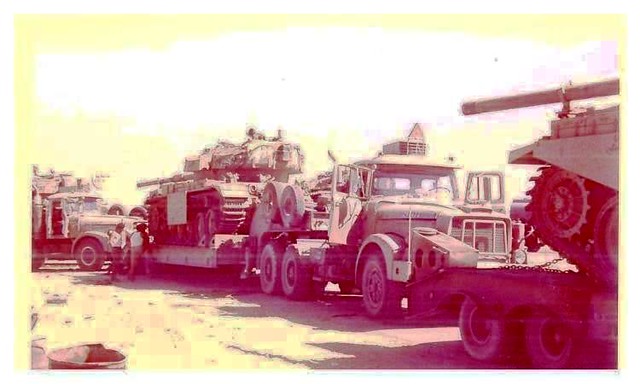[zb] anorak,
Thanks for the welcome. I’m glad you mentioned the Buffalo as it typifies the problems with Leyland, to which I shall come in a bit.
Like I’ve said in my previous post, whereas it may seem to indicate I endorse Carryfast’s opinion, this is only true up to a limited degree. He may get tediously repetitive but if the point is that national conditions are reflected by the lorries produced by a given country, I don’t think this is disputable. To that extent, UK-produced lorries primarily responded to UK conditions. If your longest non-stop journey was not likely to be longer than - say - 300 miles one way and you were never too far from workshops and civilization, arguably there was no need to have a huge sleeper cab (as in the US) or even a modest one (as in Scandinavia). Neither was 150-200 hp too low for the maximum legal GVW given the fact that average speeds were low and - other than one or two exceptions - gradients modest. However, this was just one of a number of factors which contributed to the outcome. I am writing from the point of view of someone who did not grow up in the UK and who arrived there in the late 1980s, when Maggie was already on the way out, so I do not wish to comment on the union/gov’t issue. I also would not like to comment on the question of whether “Europe-ising” a US or Canadian made lorries could have been the magic potion (I note however that when Ford did just that with the Conti it was only a moderate success). In any case that was well after things “went wrong”, and things went wrong already in the 50s.
My point is that regardless of what UK operators wanted, there was a huge market lying at the feet of the British lorry manufacturers, one which they were aware of and which they - I’ll never understand why - failed to tap. Forget Europe for a second. In the 1950s - even though a lot of the colonies were achieving independence - vast parts of the world were still under British influence. Africa, Australia, NZ, parts of South East Asia, the Middle East and (to a lesser extent) Canada and South America were all markets which a large company like Leyland should have dominated until today. A lorry which would have responded to the conditions prevailing in these regions might have even been successful in the large US market. However, this required continuous development of existing - basically good - designs. Development of this type required close cooperation with local operators and dealers and here UK manufacturers fell on their faces (paradoxically with the exception of Atkinson in Oz). The best example of this c…k up is represented by the 50s Leyland Buffalo which was supposedly designed for these markets. For 1955 it had ample power - 230 hp when most US lorries did not have anything more powerful than the ■■■■■■■ 220, and later they got the Leyland 900 to produce 275 hp in turbocharged form, again, not bad for the early 1960s. However, for some reason they fitted it with a 6 sp ZF box, hardly ideal for such a slow revving large engine (same curse as plagued the smaller Beaver/Hippo). Result: engines would blow up due to over-revving. It took ages before someone thought about offering a splitter version. Also, the chassis was too heavy (important, believe it or not, in a market like Australia, where max weight rules were strictly enforced). None of this was something which could not have been rectified: an auxiliary g/box of the type produced by Brown Lipe in the US could have easily grafted to the main box to give say 18 total speeds. For countries with stricter max GVW regs one could have developed a model to go between the Hippo and the Buffalo (Leyland Bison?) using a Hippo’s chassis (itself sturdy enough) and GRP cab. Continuous and thorough development of the Leyland 900 would have resulted in an engine developing 350 hp in 1964 (with more coming later). None of this took place — you had three wheelbase choices and one engine/box choice, take or leave it. Come the early 60s in Oz for example, nobody had to take it — Kenworth arrived on the scene and was listening to local dealers, operators and drivers immediately — all at a competitive price. For the next big lorry from the Leyland group, the Contractor, Leyland had to use bought-in gear from ■■■■■■■ and Fuller (lower profits obviously) but again there was no attempt to try and reduce weight which meant that downunder it was a failure and really only used by the Aussie army. Even that was hardly successful as Leyland foisted the woefully inadequate 8sp Wilson semi on the army (the IDF tested those and wisely insisted on the Fuller RR).
To a lesser extent the same mistakes were replicated with the bonneted Beaver/Hippo — it might not have been overly heavy but as of the early 1960s it was starting to lag behind on hp. Again, the g/box ratios were strange and inexplicable (even with the splitter which was guaranteed to drive one insane with that straight cut gear wail).
Another issue was failing to keep with agreements made. In Israel, Leyland had a dream contract with the government under which it enjoyed a monopoly (there was effectively an import stop on all other brands for the 1st part of the 1960s). The other side of the coin was that — over a phased period — the Leyland Ashdod plant’s production was to change from mere assembly to having 50% local content, and ultimately produce engines for the local market and even for Leyland to sell abroad. None of this materialized and ultimately — after Leyland repeatedly failed to even deliver sufficient numbers of CKD kits - the Israeli government cried enough in 1973 (there were a number of bizarre attempts to deal with the problem by importing Sisus badged as Leyland Beavers (yes), Ergos which the market did not know it wanted and even LD55s with AEC engines which nobody knew or understood, but this is another story).
Returning to the European market for a moment, although I’ll admit there are far more knowledgeable people here, I have a feeling lorries which would have successfully gone through baptism of fire in the wilder regions would have netted benefits for the European market (why bother with the AEC V8 if you had reliable turbocharged 680 with 280 hp or a 900 with 400 hp in 1969?
Like I’ve said, those are some of the reasons for the failure but to me a manufacturer which arrogantly ignores potentially huge markets, fails to indulge in development of basically sound designs, does not listen to its dealers or to keep to its contractual obligations is doomed — in 1975 it was really very late to rectify any of these accumulated issues…
Just my opinion, not worth more than 2p, lol. Feel free to correct me if you think I’m talking from a place where the sun don’t shine (no, I do not have an automatic answerphone like Carryfast in case you ask).
As for the Buffalos in Israel, Leyland sold a paltry three EHB/5 swb. I believe they showed a lwb EHB/1 but it had no takers with that wheelbase, Israeli roads being what they were.

One of the three, bought new by Hamenia co (still in business as Linoa Group today). It ended as a tipper and scrapped in the 1970s. Pic from Linoa’s own archives.

A scan from Israeli newspaper Davar from 1959 showing Leyland’s Israeli dealer’s, The Consolidated Near East Co. Ltd., stand at the Tel-Aviv anniversary fair in 1959. I’m fairly certain the lorry in the pic is the lwb nobody wanted which I suspect was eventually sold in Spain or South America. There’s a price tag on that Buff, namely 45k Israeli pounds. No idea how much this is today but the next model down, the Beaver, was quoted at 25k Israeli Pounds, which tells a tale… 
Cheers
L




